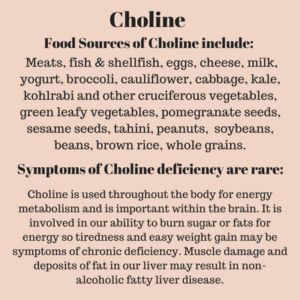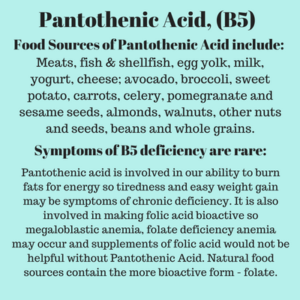The definition of success varies for different people. As a public health educator I always felt successful when I heard ideas I had recommended being recommended to me – smile and nod and say What a great idea, do you mind if I share that with others?
Survival with health issues or other types of crisis often means making changes to old ways of doing things. Learning what works for some people in some situations can help others in similar situations or may be the idea that leads to their own adaptation of the idea to better suit their needs. I’ve had health problems all of my life, not too severe but often effecting my daily ability to breathe or think or move comfortably. I’ve had to make many changes and recognize when something is better for me to avoid than to try. Reading about the experiences or research of others has helped me improve my own health.
Many people can have similar great ideas, thinking and trying things is free. Sharing great ideas can help increase the number of people or places benefiting from the information.
My goal for success is survival of the planet and as many of its species as possible. Tragedy is occurring too often. Wildfires are part of the natural cycle of forest growth but become more dangerous when more people live in the area. The risk of wildfires occurring in Southern California and elsewhere in the dry areas of the southwest are expected to double by 2050 with the changes occurring in climate patterns. “The risk of devastating fires in Southern California will double by 2050. Southeastern states will also see more wildfires in the coming years.” See: 13 Dire Impacts Outlined in the New Climate Report, politicalchange.org.
- Building or rebuilding with more disaster or wildfire resistant construction and landscaping (including a perimeter of no vegetation around the building) is a topic with more information available, some links available here: Peace is privacy and shelter from weather. Learning from a children’s story – don’t build with straw or wood, build with brick if you want durable construction. Buildings are made with fire alarms and sprinkler systems to reduce risk of fire spreading. Watch towers are placed intermittently throughout forests with a person to watch for signs of fire. In the days of early settlers townpeople or individuals would make fire breaks around settled areas to reduce the risk of wildfires spreading into the settled area. Sod construction was messy but less of a risk for fire except for the thatched roof. (Sod House/Wikipedia) Building in floodzones risks frequent flooding, more people in those areas are building on stilts or building floating houses, or the areas are being rezoned for other construction or are being restored as wetlands which help protect nearby areas from flooding. Adapting to the changing times in advance saves money and trauma later. (Knightsen Wetland Restoration and Flood Protection Project, Balance Hydrologics)
- Links regarding trauma and recovery here: Peace is recovering from trauma.
- This month’s tragedy was also a previous year’s tragedy and the goal is to have better plans in place for the future as the risks increase with warmer drier weather patterns. Information about volunteering or donating money to help with the current wildfire crisis in California can be found here: (California Volunteers).
- Ideas about improving the early warning system for wildfire risk is discussed in this article: Response to California Fires: A New Warning System?, Guy on Climate.
- How climate change can affect wildfire risk on the west coast of the U.S. and severe snowstorm risk on the east coast at the same time is discussed in the article: Consequences of the November Dipole, Guy on Climate. It isn’t discussed in detail in that article but the air mass over the west coast is likely increasing drought (Causes of Extreme Ridges That Induce California Droughts, Journal of Climate, it is complicated).
The human impact on the planet and its species is undeniable. Just how fast or how severe and whether the rate matches predictions or not is splitting hairs. The fact is extreme weather events are increasing in frequency and severity and the ocean is becoming warmer and more acidic and pollution is showing up basically everywhere on the planet that has been monitored.
Currently the air quality is not very safe for breathing in many areas of California where wildfires occurred. For my personal health it wasn’t that good to begin with in some areas. I was congested within six hours visiting the Los Angeles area – I later spent a lot of time thinking and then writing down some ideas of my own and others regarding large air purification systems: Imagining Windmills – Solar Sail Revolving Ones. I can’t think well when I don’t have clean air, let alone breathe well, or do any other activities. My favorite places to visit in California included some national forests and a shady countryside walk along a creek. I cannot survive well in a polluted area or where it is too hot, dry and sunny. Heat adds to inflammation for people with autoimmune problems. People are unlikely to enjoy themselves if they are overheated or disoriented from bad air conditions.
Some points from previous posts about health and air quality:
- Information about smog: (Causes and Effects of Smog, conserve-energy-future.com)
- Having adequate B vitamins which are important for all aspects of metabolism and energy production in the body may help reduce the harmful health effects of breathing smog-laden air: (Could a Daily Vitamin Curb Smog’s Health Effects? webMD.com)
- Banning indoor smoking helps a lot. Some states have banned indoor smoking in all public places but some still allow. I’m updating this post in a location that allows it in a section of the building and the odor is obvious to me throughout the main area of the building. It is a health risk that may be worse for people who have deficiencies or metabolic differences in B vitamins such as folate and B 12 which are discussed in more detail later. Other tips for reducing formaldehyde are discussed in this post: formaldehyde-health-risks-and-environmental-and-dietary-sources/
- Formaldehyde is a common chemical in polluted or smoky air and folate is needed to help the body detoxify and excrete formaldehyde. It may be an underlying factor in risk for autism development as housing with poor air circulation and/or some types of new vinyl flooring is associated with a greater risk for autism in the family. Other pollutants that may effect children are included in this post: environmental-toxins-and-neurodevelopmental-disorders-in-children/
- Genetic screening might be helpful for people living in smog areas -methylation differences can leave people unable to use the common supplemental type of folate called folic acid or vitamin B12. Methylated forms of both are available or both can be found in some typically used foods but if you did have a genetic difference in ability to methylate then it is better to avoid using the supplemental folic acid or un-methylated B12. It is like filling the body with puzzle pieces that fill the receptor spots that are open but which then can’t connect properly to other pieces. The unusable forms compete with any methylated vitamin that was available from dietary sources of B12 or folate that had been eaten that day. (Selfpay, for research purposes only, genetic screening panel that I have used – meaning it isn’t approved as a diagnostic tool that you could get your health insurance to cover or doctor to prescribe.) We need to try new strategies if we hope to get different results.
People value different things, and that is valuable and looking at different ways to do things can help us adapt to a changing world.
Disclaimer: Opinions are my own and the information is provided for educational purposes within the guidelines of fair use. While I am a Registered Dietitian this information is not intended to provide individual health guidance. Please see a health professional for individual health care purposes


